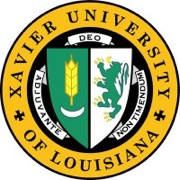Below is a summary of the abstract you submitted. Presenting author(s) is shown in bold.
If any changes need to be made, you can modify the abstract or change the authors.
You can also download a .docx version of this abstract.
If there are any problems, please email Dan at dar78@pitt.edu and he'll take care of them!
This abstract was last modified on March 13, 2024 at 3:45 p.m..

Bacteriophages, viruses that infect bacterial cells, offer promising avenues in combating antibiotic resistance and ensuring food safety in the food industry. In this study, we investigated the genomic characteristics and morphology of bacteriophage SuMoo, discovered in Arabi, Louisiana, by Esraa and Mohamed Sharaf. Environmental samples were collected, and enriched isolation techniques were employed to isolate phages, with one sample yielding positive results. Subsequent purification involved serial dilutions and plaque assays, repeated over four rounds, resulting in a lysate concentration of 1E11 PFU/mL. Morphological analysis of isolated plaques indicated a round shape with cloudy rings, suggestive of a temperate phage. The genome of SuMoo was sequenced and autoannotated. After analysis, 81 identified protein-coding genes and 2 tRNAs were identified, with putative functions assigned to 33 genes and 9 identified as transmembrane. Various bioinformatics tools were utilized, including DNA Master, Starterator, PhagesDB, HHpred, tRNASscan-SE, Aragorn, and DeepTMHMM, to elucidate gene positions and potential protein functions. The ongoing assessment aims to confirm the presence of expected functions and explore lysogenic genes. These findings contribute to the expanding field of phage research, highlighting the potential of bacteriophages like SuMoo as alternatives to antibiotics and tools for bacterial contamination control in various industries.
